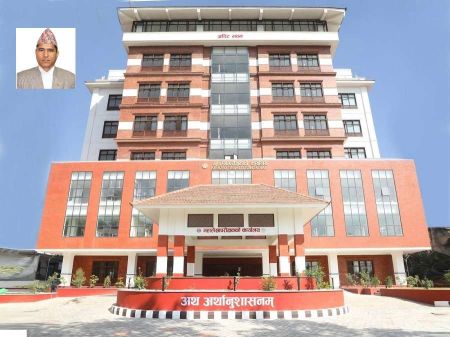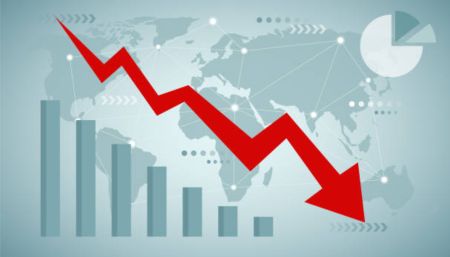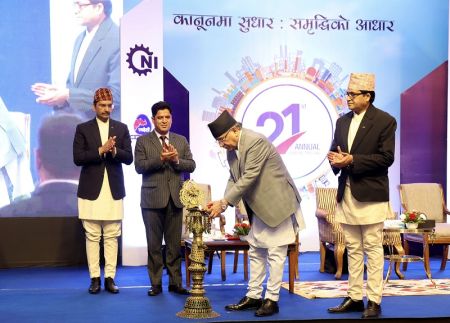.jpg)
Nepal can be Haiti; Nepal can also be Japan or Chile. The choice is ours.
--By Dwaipayan Regmi
The Chile earthquake of 2010 killed more than 500 people. It had a huge impact on the country’s tourism, fishing, forestry and wine industries. Damages to seaports caused a short-term market loss where it became tough to balance supply and demand. Depreciation of the currency and inflation, followed by low demand for exports, weakened the country’s economy badly. The government rebuilt 500,000 homes and repaired a million. This rebuilding triggered a growth in the cement industry. Chile was back to economic recovery within a few years.
In contrast, the Haiti quake killed more than 200,000 people, left 10 million homeless and destroyed thousands of homes, schools and hospitals as well as the UN headquarters and the main prison. Nineteen out of 20 ministries collapsed. The Haiti quake was even more destructive because it was also followed by an outbreak of cholera that spread across the country, killing thousands.
Nevertheless, restaurants, hotels, hardware stores, construction and security businesses obtained billions of dollars in aid. The large number of donations made towards the health sector made NGOs much more active than government organizations. This had a positive impact on the health sector.
The large amount of basic requirements brought in by NGOs raised the sale of domestic products. The large number of foreign workers had a positive impact on the housing market increasing rent prices. In short, Haiti welcomed in new businesses.
Although an estimated $9 billion went into relief funds after the quake, the country still faces problems like lack of employment, lack of proper education and lack of proper access to running water. Indeed people are still living under tents. The lack of proper coordination between funded organizations and the government, and suspected corruption is regarded as Haiti’s major failings.
The Gujarat earthquake on the other hand made around 500,000 people unemployed destroying more than 60 banks. The death toll exceeded 17,000. The Indian state lost around 23 billion dollars of its GDP at that time. In the aftermath of the earthquake credit worth US $800 million was arranged with the Asian Development Bank and the World Bank. The Gujarat government was allowed to float tax free earthquake bonds. Gradually things got better and today Gujarat is no longer a backward state in India.
The 2011 earthquake in Japan brought a global economic slump. Despite the fact that this quake affected Japan’s own economy, it also had notable effects on the global market. The disruption in the regular supply of automotive and steel parts resulted in high demand from other areas of the world. Toyota and Nissan halted their production for some time. Two out of three of Hondas plants were closed. Japan, as an export country, had to face a large budget deficit. However, it did not take very long for Japan to recover and bounce back.
The 2015 Nepal earthquake, which killed more than 8000, damaged highways and roads, hydropower plants and hospitals, media houses and banks, historical monuments and educational establishments. 80% of the houses are reported to be affected in the capital. Preliminary reports have stated that around 720,000 houses must be reconstructed. This is likely to displace millions of people and will increase demand for rental properties in the capital.
The two major sources contributing to the national GDP, agriculture and the service sector have been heavily impacted. The service sector, mainly based in the capital, seems to be affected badly, as many workers are back home and the buildings not safe to stay in. Roads and highways are obstructed. Nepal is still counting the cost of the earthquake in economic and human terms, with the financial loss estimated to be in the billions of dollars.
The earthquake has a number of assorted threats that can bring a huge downturn to the national economy. Tourism is almost at a standstill. A large number of people’s livelihoods depend on tourism. With historical monuments damaged or destroyed and mountains unsafe to climb the impact on tourism is huge. Nepal Tourism Board has come up with certain plans to help continue tourism. Their success remains to be seen. Also a decrease in farming with many farmers focusing on finding shelter will likely increase imports creating a budget deficit.
Education in Kathmandu will see a setback with families afraid to send their children to school in the capital. However, this can lead to more students studying in other major cities like Biratnagar, Ithari, Janakpur, Birgunj, Hetauda, Butwal, Bhairawaha, Nepalgunj. Nearly all the schools in Sindhupalchowk and Dolakha are severally damaged, putting the future of the students there in doubt.
The government has halted the construction of new buildings but reconstruction work will keep the demand for bricks, mortar and cement high. Labour will also be in high demand. However, a failure to maintain a proper supply may inflate prices. Migration is another thing that has huge possibilities in the days to come. Pharmacists and civil engineers will also be in demand across the affected areas of the country.
Other areas like insurance, real estate have huge possibilities of also being badly affected. A major loss to the country’s economy will come if young people already working in the country decide to go abroad.
The best measures the government can take at this time are to lower taxes and increase public expenditure so that the money keeps on flowing into the market. Promoting entrepreneurship and reducing red tape will encourage Nepalis living abroad to invest in Nepal, thus contributing to the GDP generating employment. This has to be done at the strategic level.
Although Haiti was able to bring in international investment, it took some time. Foreign investment must be highly promoted. This will help in many ways. Therefore, every barrier must be removed in order to welcome foreign investment into Nepal. Agreements like BIPPA should be strictly drilled, and stimulated. Any Bandhas could have a negative impact on foreign investors. Youth empowerment has to be properly focused.
The large amount of money in the Prime Minister’s Relief fund has to be properly utilized as should the huge loans currently being offered by the country’s banks.
Nepal can be Haiti; Nepal can also be Japan or Chile. The choice is ours.
The writer is a an MBA student at JNTU(A), Andhra Pradesh, India.





















